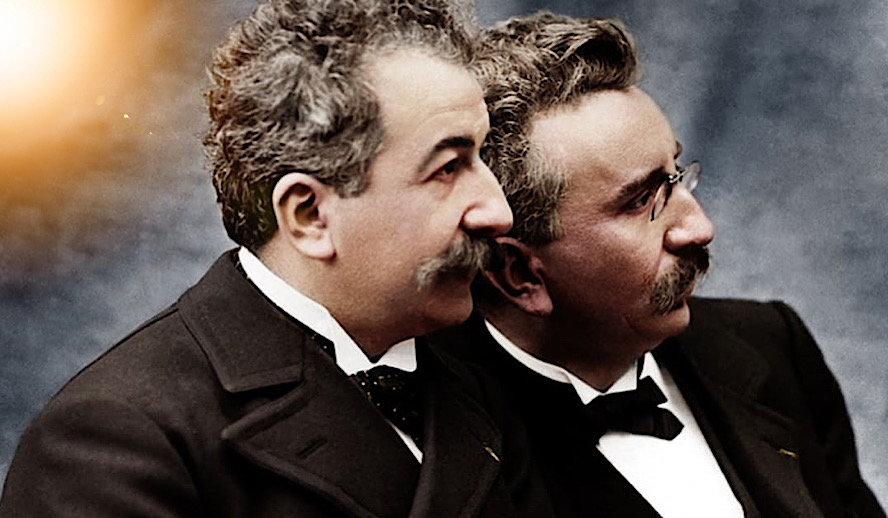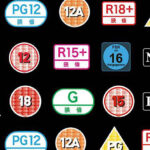Table of Contents

Video Version of this Article
Photo/Video: Invention of Film/Hollywood Insider YouTube Channel
At the heart of photography and film is a chemical, optical process intuited by a multitude of medieval alchemists, artists, philosophers, mathematicians, and modern scientists, establishing the world of technology and art we see today. Predating the photographic era, the perspective of art, science, and the physical world was drastically different. Evolving incrementally over years of experimentation and discovery, leagues of visionaries set the stage for the development of Cinematic art, science, and new technology–forever transforming and shaping the cultural norms often taken for granted in the present day.
The saying “A picture is worth a thousand words” can almost lose its original poetic timbre to someone who has been acclimated to the norms of our modern, technology-based culture and its ability to create (relatively) objective, fixed media records of reality itself. What is written language, but a thought, taken and frozen to retain its form for interpretation? This is the function of a still image in photography. But what did life look like before these technological breakthroughs formed the structures of our society?
Related article: 8 Glass-Ceiling Breaking Female Pioneers in Cinema from Old Hollywood to Now
Invention of Film
Without actually traveling to a foreign continent or region, how would you imagine what the life of everyday residents looked like? What did entertainment look like? What would happen if there were no semi-objective records of the world and we had to rely purely on mental imagery? Today, fragments of our memories are often linked to pictures as bookmarks, our brains forming half-realized, half-imagined photos of what happened.
Before noting some key figures in the historical development of this technological pursuit of both the arts and sciences, we must first give homage to light.
“The changing of Bodies into Light, and Light into Bodies, is very conformable to the Course of Nature, which seems delighted with Transmutations.” – Sir Isaac Newton
Sir Isaac Newton was a bridge between the scientists of the old, and the scientists of the new world–the last of medieval alchemists and magicians, and the first of modern scientists to unknowingly predict the science of photochemistry.
Light is the key elemental force in the breakthrough of photographic and Cinematic technology. Understanding its mysterious behavior in combination with the introduction of chemical properties unlocked the way we utilize and manipulate one of Earth’s most innately valuable resources. It’s hard to remember that the ‘physical’ world is this transient, transformational lightening and darkening of three-dimensional space, full of objects.
Subscribe to Hollywood Insider’s YouTube Channel, by clicking here.
Our understanding of reality is filtered through our own biological interface technology–the relationship and function of light as it passes through the human eye and brain. Mental imagery itself is a fixed record with full resolution from corner to corner–yet only a semi-objective representation of reality. At best, it is an interpretative illusion based on key bits of light data taken in through the eyes and then translated by the brain.
Some of the first experiments with light and aperture can be traced back to the camera obscura (from Latin meaning dark chamber).
The Camera Obscura
Although the principles of the camera obscura don’t constitute photography as a fixed record of a physical scene, it was through these observations of light’s behavior that lead to the first comprehensive manipulations of light to project image. Though simple in principle, the implications of this process are foundational–the necessary precursor to modern photography and film. Using a dark room, can, or box that doesn’t allow light in -except for a single small hole on one side opposite of it – a real-life image will be projected onto the wall, but inverted or upside-down. When light reflects off an object, it changes–once it’s reflected it travels in a straight line. Mirrors were later used to revert these images, flipping them right side up.
These basic principles of light passing through space are the foundation for the technology of the present. Shrinking the hole produces a sharper, but dimmer, image because there is less light. Wider aperture (the access holes for light) will produce a wider, but generally blurrier, image. This is why the lens was such an important upgrade from the hole in the camera obscura–because it allowed more light while maintaining a sharper image. Its convex structure gathered more light from more angles.
Related article: The Power of Positivity: Ikorodu Bois + Chris Hemsworth + Russo Brothers + Sam Hargrave
Limited Time Offer – FREE Subscription to Hollywood Insider
Speculative Prehistoric Findings
Ancient thinkers noticed you can use this method to study a solar eclipse, suggesting possible ancient use of camera obscura as a way to observe the cosmos. Prehistoric megalithic tomb structures featuring long narrow passageways would sometimes open into the sky and effectively operate like a camera obscura–reflecting stars and astronomical objects that were otherwise too dim to see. Although it remains speculation, perhaps the sight of a certain star could be a sign for prehistoric people to migrate for warmer months.
While it’s difficult to pay homage to all of the contributions of thought and development into the productions of this technology, some of the earliest written observations are credited to a Hans Chinese philosopher Mozi (Mo Di) around 500 BCE. He spoke of a device for passing sunlight through a pinhole and plate to channel the panel of the sun. This suggests a powerful insight–in order to understand the power of light, you have to limit it and that you can only understand the power of the sun by blocking out almost all of its influence.
The Daguerreotype
‘’I have captured the light and arrested its flight,
The sun itself shall draw my pictures” – Louis Daguerre
It wasn’t just science and technology that predated these discoveries, it also relied heavily on the backs of artists. Photography didn’t arise from nothing–it came on the skirts of Renaissance strides on linear perspective, intending to reimagine artistic possibilities. The early processes of photography and film development were almost alchemical, involving chemical, optical processes. Photography and film were at some point no more plausible than the perceived “fools errands” of alchemists in their transmutation of matter. It was this type of thinking that laid the groundwork for the chemical advancements that would make this technology possible.
Related article: Hollywood Insider’s CEO Pritan Ambroase: “The Importance of Venice Film Festival as the Protector of Cinema”
Related article: The Masters of Cinema Archives: Hollywood Insider Pays Tribute to ‘La Vie En Rose’, Exclusive Interview with Director Olivier Dahan
French painter and developer of diorama theatre, Louis Daguerre, is often referred to as the father of photography for his first practical photographic processes in his creation of the Daguerreotype. Extrapolating on the influences of Nicephore Niepce (inventor of the heliographic plate technique), he paved some serious groundwork for today’s technology.
Although not trained in chemistry, it was his quest for ever-changing realism in imagery that proliferated his findings–he created panoramic paintings, diorama, and then eventually changed the game by using mercury fumes to maintain a fixed image. The maintenance of this still image was a huge breakthrough. The production of an image was possible before, but there was that missing chemical ingredient that allowed the image to remain. He used a silver-plated sheet of copper with iodine vapor, coating it with light-sensitive silver iodide, then developed the image with mercury vapor and fixed it with strong salt solutions.
History of Motion Pictures
Motion pictures grew out of several streams of existing technology. The Zoetrope and Phenakistoscope were some of the early tools for animating a sequence of still images. The Phenakistoscope is a cardboard disc attached vertically to a handle that simulated motion, such as a person walking. The Zoetrope simulated movement by placing a strip of still images on a drum-like cylinder and while it rotated, one could look through slits in its side, also giving the impression of continuous motion. Other products of similar technology would go on to present images in motion–like having to stick your head in a box to watch the sequential image.
Related article: A Tribute to Studio Ghibli: A Masterclass of Storytelling and Cinema
Related article: ‘Throne of Blood’: Akira Kurosawa’s Compelling Shakespeare Adaptation, A Striking Cinematic Experience
It wasn’t until the mid-1890s that the French Lumiere brothers (Auguste and Louis) charted the culture of inclusive Cinema that we recognize today. Earlier cinematographic screenings did exist but didn’t make the mainstream breakthrough that the Lumiere brothers had (possibly due to insufficient financial backing), so they are often credited with the first screening of film to a large audience. They were the first to really manufacture the communal culture of social entertainment and engagement that we experience today in the world of film and Cinematic arts.
Because of limiting technology, earlier films were usually no more than two minutes in play time–the celluloid film strips would tear if the film was too long. It wasn’t until the crucial invention of the Latham Loop that film transformed from a technical spectacle into a mainstream entertainment medium and art form. Wheels became a groundbreaking technology in the evolution of film as they allowed some slack to lessen the tension on the film strip to stop it from tearing.
Alice Guy Blache
Films were not driven by narrative and plot upon their emergence, and it was credited to Alice Guy Blache (considered the foremost pioneer of Cinema) for jump-starting this process. In 1894, she worked as a secretary for an engineer who ran a photography company making materials for film companies like the Lumiere brothers. Through her job, she was able to attend a premier in 1895 of the short film “The Sprinkler Sprinkled.”
Related article: In Honor of Awards Season, A Tribute to the Greatest Acting Teachers – Stanislavski, Strasberg, Adler & Meisner
Related article: Evolution of Technology in Cinema: Film to Digital, CGI, VFX, Motion Capture & Beyond
She became interested in it as an art form, and in 1896, she made a film called the “Cabbage Fairy”. She was said to have made this on her lunch break! This film became known as one of the earliest examples of fantasy films. She went on to direct and produce more films, eventually being made head of production at her workplace as it transitioned into a full-fledged film studio. She wrote, directed, and produced more than a thousand movies, and was one of the first to experiment with chronophone sound in her films, which didn’t become mainstream until later in history. Most of these films are lost, like many of this era, but you can view the “Cabbage Fairy” on YouTube! Previously, her achievements were underemphasized, but in 2018 a documentary, narrated by Jodie Foster, called “Be Natural” was made in remembrance of Alice and her accomplishments and contributions to the art of Cinema.
Sequential Imagery: The Time-Space-Eye Continuum
Film is essentially a technology that exploits a loophole in the way we process images. Cameras correspond to light in a fairly similar manner as our own eyes. In order for us to enjoy the amazing Cinema we do today, or “see” anything at all, there is a process, or relationship, that transpires between light, the eye, and the brain. Light is gathered and refracted through your eye, while light-sensing cells in the retina then translate that data from image to brain. It is then interpreted into the experience we call vision. Very much like the camera obscura, the images of the world we see every day are projected into the retina in the same inverted form. It is then up to the brain to create the perception of the visual field considered “right side up”.
Related article: A Tribute to Tom Hanks, Oscar-Winning Everyman of ‘Toy Story’, ‘Forrest Gump’
Related article: Will the Diversity in Victory of Last Year’s Oscars 2019 – 91st Academy Award Winners Ever Be Repeated?
Your brain creates a sensation of an image, simulating a one-to-one relationship with the outside physical world. It can be proven in a number of ways that it does not actually capture that world in a one-to-one way. Our perception is riddled with blind spots–our brain stitches together information that makes a cohesive or fluid impression of our surroundings. The retina senses as the brain perceives, then attempts to procure a seamless interpretation of that data. A human brain can only process 10-12 images per second–retaining an image for a fifteenth of a second and if a new one emerges, it creates the illusion of continuity.
Some specific terms even exist to describe this perceptual phenomenon (the brain’s tendency to perceive certain types of changes in successive still images– displayed at the right speed–as still, continuous motion) such as: persistence of vision and beta motion. POV is a common optical illusion we experience when we retain an image for a short period of time, after the removal of the stimuli that produced it. Beta motion is a term that describes our ability to see various types of illusory motion in successive still images.
Experiments on how our brains respond perceptively to these stimuli have provided some valuable insight on the brain’s role in perception. For example, images of fast-moving dots-frame by frame-will not appear as a frame of dots, but more like a snake. These findings can be observed using various demonstrations of dots. Another example uses rapidly flashing dots on different parts of a screen. If the flashes are timed and positioned correctly, we don’t just perceive a dot flashing here and a dot flashing there – but we perceive a single dot that moves between the locations of the flashes. This indicates that our vision is not a straightforward, objective representation of reality, but more of a world of sensation stitched together in the brain.
Related article: If Oscars New Rules Had Existed 80 Years Ago, These Deserving Stars Would Not Have Been Ignored
Related article: Cowboys and Samurai – A Study Of Genre | An In-Depth Analysis
If you take this same principle but change the colors of the dots between flashes, studies show that people tend to perceive a change in the color of the dot halfway through the path it takes. How does this occur if it wasn’t actually traveling and you didn’t know what the second dot color would be before you saw it? It seems to indicate that not only is our vision a seemingly stitched-together impression in our mind, but our perception of time from moment to moment is also a simulation stitched together as well. What you think you see in one second can be changed a split second later! Not until after you see the green dot does it change your perception on the dot you saw halfway on its imaginary journey–like you’re seeing with your memory and other cognitive functions. Vision is not reality, but more like an illusion mostly formed by reality, not quite there in your senses, but perceived as you edit the information.
Treading The Terrains of Imaginative Thinking
Incredibly fascinating stuff! The dimensions that exist in the history of these technologies we use and enjoy today are steep. Each brick-by-brick placement of a new discovery led to the next, made by innovative people crazy enough to dedicate their lives to their curious fascinations. It’s inspiring to consider the obstacles most of these thinkers and inventors had to encounter over time.
One of the most interesting things to me about these breakthroughs is that during the process, many of these figures in history were seen as outlandish or foolish for their relentless experimenting and digging. While these ideas kept them intrigued, many of them would have no clue what their research would lead to in the years to come, and if the time they spent dedicating their lives to these things would ever prove to be purposeful or yield value. And yet, despite the naysayers, they continued their experimental research.
Related article: One of the Most Beautiful Love Stories ‘God’s Own Country’ is a Must Watch for Fans of ‘Call Me By Your Name’
I’ve come to understand both science and art as an affirmation of our ability to comprehend the truth. Often, both then and now, those who pledge to prove complex theories engage in such a courageous commitment to their ideas and imagination that others may see them as strange, perhaps disturbingly obsessed with their work, with no clear path of utility ahead. What if those in our history allowed such judgments, both externally and psychologically, to undermine their efforts? What would have been if such weight had steered them from their beliefs? What separates these people from those who give up before making the leap into the abyss of innovation?
What if Einstein (for example), when unfairly criticized, deeply internalized these negative thoughts? What would have become of science today had he lost his unfettering will and tossed his work into a chamber of flame, charring his brilliant scribbles to ease the pressures in his mind? Surely, this would have drastically halted the evolutionary process of our science, art, and technological progress. We absolutely need these risk-takers, these pioneers of perseverance, who seem to harbor the mysterious courage to continue past the mountains of doubt and failure—the ones that sizzle with the desire to create, invent, envision, philosophize, and experiment.
Perhaps they are the Earth’s forces at play, willing growth and evolution through some indistinguishable passion, to break the world apart, and piece it back together anew. If you or someone you know has this burning fire in them, refuse the impulse to smother it. Deeply encourage yourself or a friend to feed it as long as they can. It seems to me that the respective worlds of technology, art, science, and culture, inform one another seamlessly, like one continuous motion of collaborative construction. Or maybe that’s just my brain, doing its thing.
Click here to read Hollywood Insider’s CEO Pritan Ambroase’s love letter to Black Lives Matter, in which he tackles more than just police reform, press freedom and more – click here.
An excerpt from the love letter: Hollywood Insider’s CEO/editor-in-chief Pritan Ambroase affirms, “Hollywood Insider fully supports the much-needed Black Lives Matter movement. We are actively, physically and digitally a part of this global movement. We will continue reporting on this major issue of police brutality and legal murders of Black people to hold the system accountable. We will continue reporting on this major issue with kindness and respect to all Black people, as each and every one of them are seen and heard. Just a reminder, that the Black Lives Matter movement is about more than just police brutality and extends into banking, housing, education, medical, infrastructure, etc. We have the space and time for all your stories. We believe in peaceful/non-violent protests and I would like to request the rest of media to focus on 95% of the protests that are peaceful and working effectively with positive changes happening daily. Media has a responsibility to better the world and Hollywood Insider will continue to do so.”
Ways to support Black Lives Matter Movement to end systemic racism
More Interesting Stories From Hollywood Insider
– Want GUARANTEED SUCCESS? Remove these ten words from your vocabulary| Transform your life INSTANTLY
– Do you know the hidden messages in ‘Call Me By Your Name’? Find out behind the scenes facts in the full commentary and In-depth analysis of the cinematic masterpiece
– A Tribute To The Academy Awards: All Best Actor/Actress Speeches From The Beginning Of Oscars 1929-2019 | From Rami Malek, Leonardo DiCaprio To Denzel Washington, Halle Berry & Beyond | From Olivia Colman, Meryl Streep To Bette Davis & Beyond
– In the 32nd Year Of His Career, Keanu Reeves’ Face Continues To Reign After Launching Movies Earning Over $4.3 Billion In Total – “John Wick”, “Toy Story 4”, “Matrix”, And Many More
invention of film, invention of film, invention of film, invention of film, invention of film, invention of film, invention of film, invention of film, invention of film, invention of film, invention of film, invention of film, invention of film, invention of film, invention of film, invention of film, invention of film, invention of film, invention of film, invention of film, invention of film, invention of film, invention of film, invention of film, invention of film, invention of film, invention of film, invention of film, invention of film, invention of film, invention of film, invention of film, invention of film, invention of film, invention of film, invention of film, invention of film, invention of film, invention of film, invention of film, invention of film, invention of film, invention of film, invention of film, invention of film, invention of film, invention of film, invention of film, invention of film, invention of film, invention of film, invention of film, invention of film, invention of film, invention of film, invention of film, invention of film, invention of film, invention of film, invention of film, invention of film, invention of film, invention of film

Melissa McGrath is a writer for Hollywood Insider, offering rich and engaging content for reviews and features. Melissa feels at home with Hollywood Insider’s lively team who share an equal passion for the art of cinema. Having sought out compelling stories her whole life, she is eager to examine and share her observations with others interested in thought-provoking material. She believes in changing the world through meaningful dialogue and hopes to provide helpful insight with her work. She values open discussions concerning morality, culture, personal development, and holds a soft spot for cathartic humor. Through the art of storytelling, journalism, and cinema, Melissa seeks to help build a strong community of free-thinkers and cultivate a deeper understanding of the human experience.








